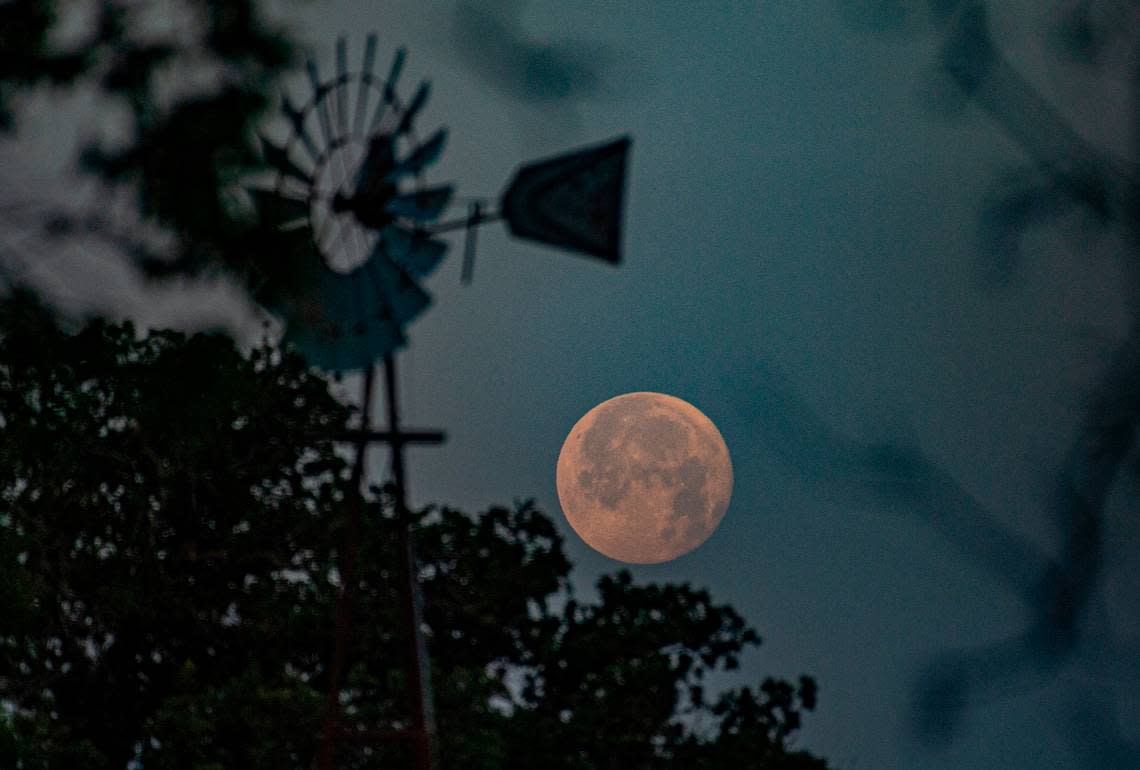A cold moon will rise over Pennsylvania after Christmas. Here’s when you can see it

The final full moon of the year is set to rise over the Keystone State Tuesday night, but expected rain might dampen the view from State College.
December’s full moon — known as the “cold moon” — will rise the night of Dec. 26 this year. According to global online clock Time and Date, the sun will set at 4:49 p.m. that evening, but the moon will rise around 4:16 p.m. Eastern Standard Time.
After the winter solstice, which took place Thursday, the days start getting longer once more, so Pennsylvania residents can expect a marginally shorter night to observe the moon Tuesday.
Why is December’s moon called the cold moon?
This month’s full moon will be illuminated Tuesday night, and the proximity to the winter solstice means the moon is along its highest path in the sky, the Farmers’ Almanac notes.
The name cold moon comes from the Mohawk language, the Farmers’ Almanac says, referring to a full moon in a month often bringing frigid temperatures. Many moon names come from Indigenous cultures, and other names for December’s full moon include the Long Night Moon, Frost Exploding Trees Moon and the Winter Maker Moon, among others.
To Pennsylvanians, the cold moon should appear full Christmas night and Wednesday, Dec. 27, as well, according to the almanac. In 2022, the cold moon rose Dec. 7.
Weather forecast for State College, Pennsylvania
While temperatures should be relatively mild this weekend into early next week, State College residents should expect rain in the days ahead.
The National Weather Service forecast as of Friday afternoon shows a 20% chance of showers after 2 p.m. Saturday with increasing chances that night. The rain is set to continue Sunday before 1 p.m. for Christmas Eve. Monday, the NWS forecasts a 40% chance of rain to dampen Christmas Day.
Tuesday night, when the cold moon will rise, there’s an 80% chance of rain in the evening, the NWS says, with a low around 46 degrees Fahrenheit.
Dreaming of white Christmas? It won't happen this year, but we can promise pleasant weather for your weekend travels! A few scattered rain showers on Saturday will be the only notable weather through Christmas day.#PAwx pic.twitter.com/0kEFXgnc3i
— NWS State College (@NWSStateCollege) December 22, 2023
How to see December’s full cold moon
While you can use a telescope or binoculars for a better view, most should be able to easily see the cold moon with the naked eye so long as rain doesn’t hamper the view.
NASA recommends you visit a remote location or move away from sources of light pollution and allow your eyes time to adjust to better view the moon.
In addition to the full moon, astronomy site Space.com notes three other planets should be visible Tuesday night with the naked eye: Jupiter, Venus and Saturn.


